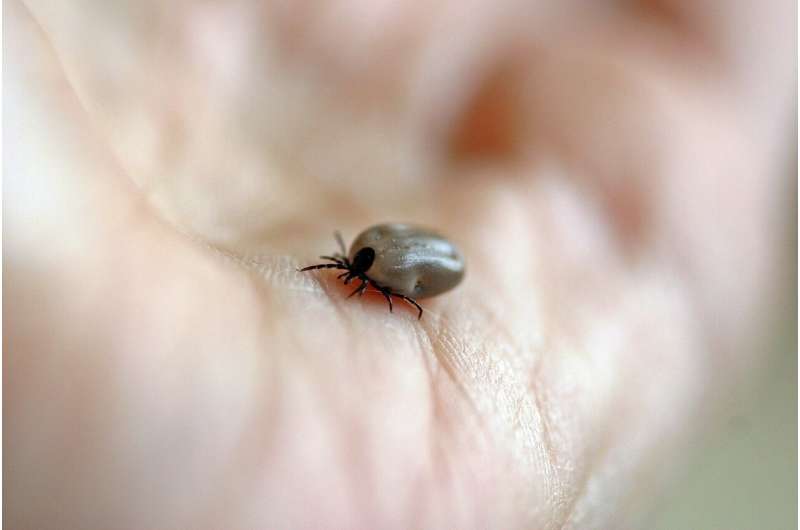Credit: CC0 Public Domain
Bay Area Lyme Foundation, a leading sponsor of Lyme disease research in the U.S., today announced the publication of new data finding that five herbal medicines had potent activity compared to commonly-used antibiotics in test tubes against Babesia duncani, a malaria-like parasite found on the West Coast of the U.S. that causes the disease babesiosis.
Published in the journal Frontiers in Cellular and Infection Microbiology, the laboratory study was funded in part by the Bay Area Lyme Foundation. Collaborating researchers were from Johns Hopkins Bloomberg School of Public Health, California Center for Functional Medicine, and FOCUS Health Group, Naturopathic.
"This research is particularly important as babesiosis is a significant emerging health risk. Due to limited therapeutics and a rise in treatment resistance, current treatment options for this disease are inadequate and many patients rely on herbal therapies for which there is only anecdotal evidence of efficacy," said co-author Sunjya K. Schweig, MD, Founder and Director, California Center for Functional Medicine and Scientific Advisory Board Member, Bay Area Lyme Foundation, who has also studied herbal treatments for Lyme disease.
"Increasingly, Americans with chronic diseases are pursuing complementary and alternative medicine to improve general health or quality of life. We hope this data offers inspiration to other researchers to further explore similar options for people living with persistent tick-borne diseases that do not respond to current treatments," added Dr. Schweig.
While current treatment protocols for babesiosis recommend use of antibiotics including atovaquone, azithromycin, clindamycin, quinine, and their combinations, these regimens are often associated with treatment failures and significant side effects, even in immunocompetent patients. In addition, epidemiologic studies have documented that up to 23% of patients with babesiosis experienced concurrent Lyme disease and its associated disabling effects.
According to this laboratory study, the five herbal medicines that demonstrated inhibitory activity against B. duncani are:
- Cryptolepis sanguinolenta
- Artemisia annua (Sweet wormwood)
- Scutellaria baicalensis (Chinese skullcap)
- Alchornea cordifolia (African Christmas bush)
- Polygonum cuspidatum (Japanese knotweed)
Further, the study discovered that the bioactive compounds derived from Cryptolepis sanguinolenta, Artemisia annua, and Scutellaria baicalensis, had comparable or even better activity against B. duncani than the commonly used antimicrobial medications quinine and clindamycin.
This is the first study to report the antibabesial activity of Scutellaria baicalensis. However, the antimicrobial and anti-inflammatory activity of Alchornea cordifolia and Polygonum cuspidatum extracts have been previously documented, and other studies have found benefits of combining agents such as compounds derived from Cryptolepis sanguinolenta and an artemisinin-based therapy.
These compounds still need to be tested both in vitro and in animal models as well as in clinical trials. While each of these botanical medicines are already in clinical use, it is important for future studies to evaluate them directly in patients using specific clinical treatment regimens, as each have the potential to produce side effects in patients, and should be taken only under the care of a clinician knowledgeable of their capabilities and toxicities.
"Herbal medicines have been successfully used by various traditional medicine systems and ancient cultures," said Linda Giampa, executive director, Bay Area Lyme Foundation. "Coinfected tick-borne disease patients frequently experience a greater number of symptoms for a longer duration than those with Lyme disease alone, pointing to the need for novel treatments for babesiosis, one of the most common tick-borne infections after Lyme disease. We hope that findings from this study are an important step towards developing new therapeutic options for doctors and their patients with persistent Lyme disease and other tick-borne infections."
More information: "Botanical medicines Cryptolepis sanguinolenta, Artemisia annua, Scutellaria baicalensis, Polygonum cuspidatum, and Alchornea cordifolia demonstrate inhibitory activity against Babesia duncani," Frontiers in Cellular and Infection Microbiology, 2021.
Provided by Bay Area Lyme Foundation























